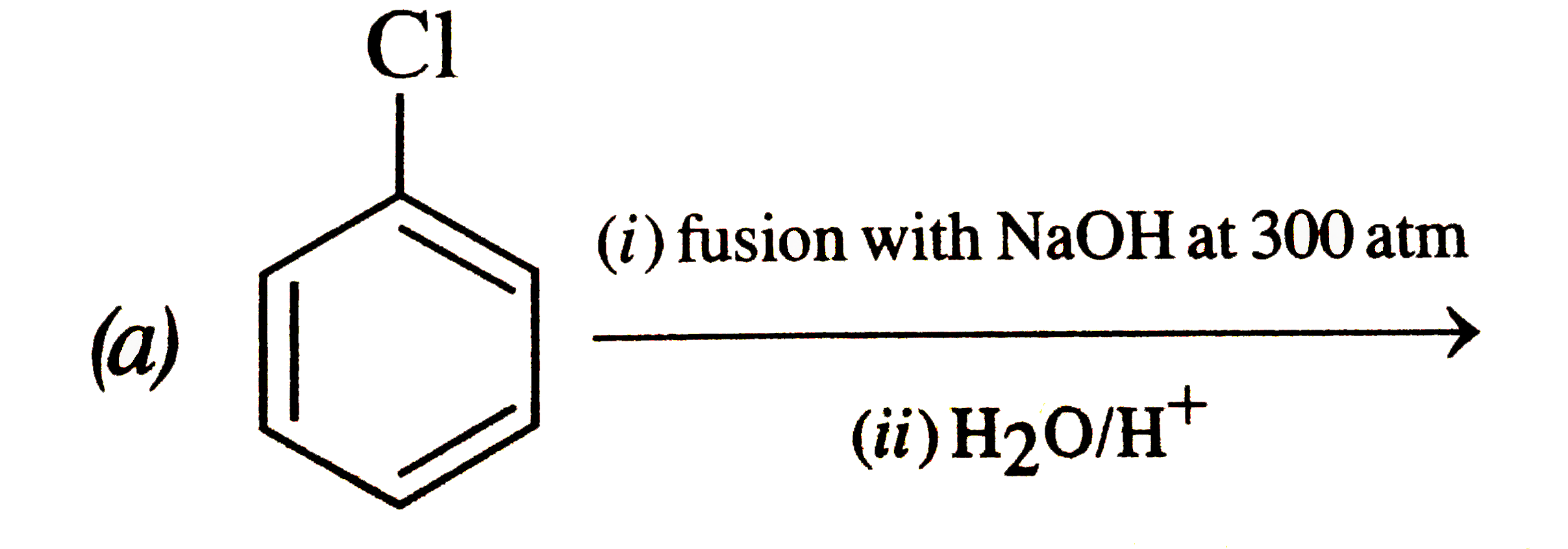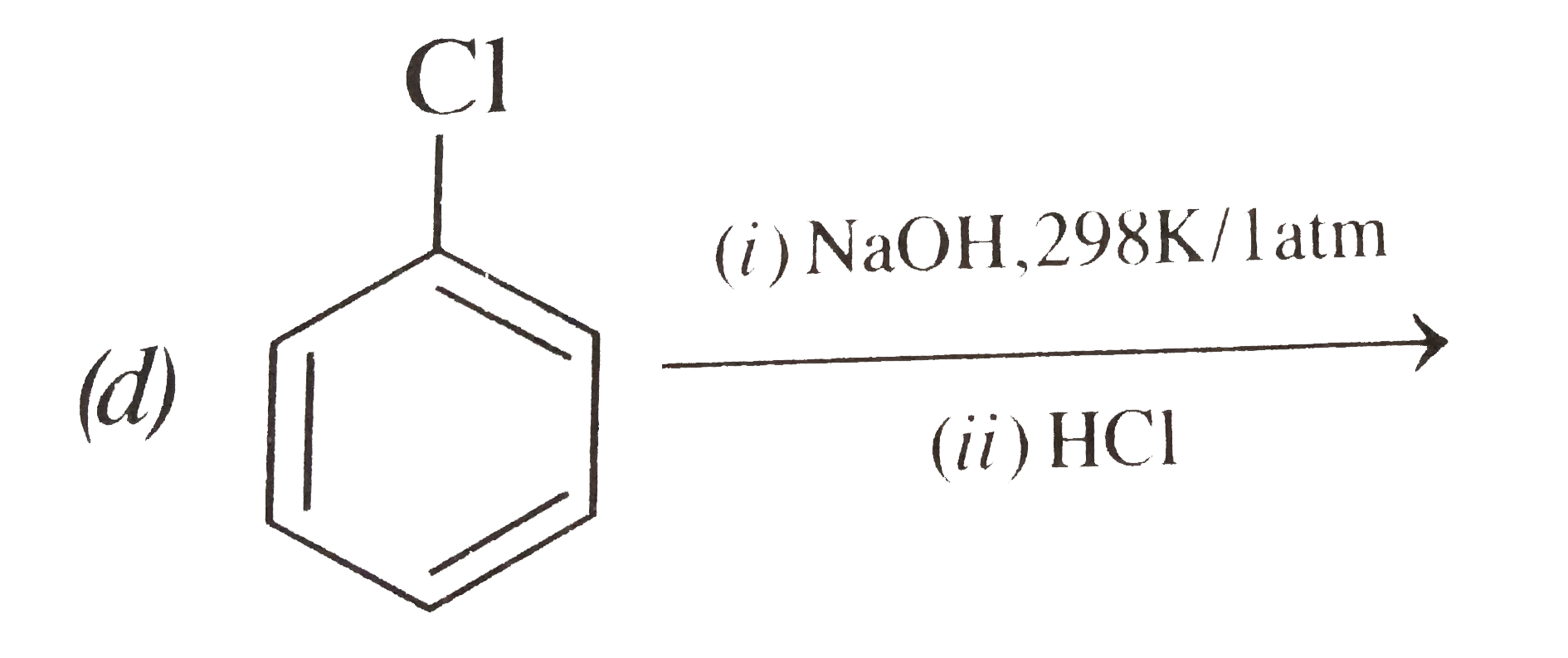Explore topic-wise InterviewSolutions in .
This section includes InterviewSolutions, each offering curated multiple-choice questions to sharpen your knowledge and support exam preparation. Choose a topic below to get started.
| 19101. |
When Cl_(2) wateris added to an aqueous solution of KI in presence of CHCl_(3) a violet colour is obtained on adding more of Cl_(2)- water, the violet colour disappears and a colourless solution is obtained, this test confirms the presence of which of the following in solution. |
|
Answer» `CL^(-)`<BR>`Br^(-)` |
|
| 19102. |
Which of the following statements is true:towards reactivity towards S_N1 |
|
Answer» ALLYL CHLORIDE is more REACTIVE than VINYL chloride |
|
| 19103. |
What is the highest oxidation state shown by a transition element. |
| Answer» SOLUTION :`+8` by OSMIUM. | |
| 19104. |
Which of the following solutions have more relative lowering in vapour pressure at a certain temperature ? |
|
Answer» 90 GRAMS of glucose in 900 grams of `H_(2)O` |
|
| 19105. |
What do you understand by shape selective catalysis ? Why are zeolitesgood shape selective catalysts? |
|
Answer» Solution :The catalytic reaction that depends upon the pore structure of the catalyst and the SIZE of reactant and product molecules is called shape selective catalysis. Zeolites are good shape selective catalyst because of their honeycomb structure. The Zeolites are microporous aluminosilicates with three dimensional silicates in which some silicon atoms are replaced by aluminium atoms giving `Al-O-Si` framework. The reaction TAKING place in a zeolite DEPEND upon the size and the shape of the reactant and product molecules as well as upon the pores and cavities of the Zeolites. Zeolites are being widely used as catalysts in PETROCHEMICAL industries for cracking of hydrocarbons and isomerisation. The Zeolite ZSM-5 converts ALCOHOL to gasoline by dehydrating them to give a mixture of hydrocarbons. |
|
| 19106. |
Which does not show mutarotation : |
|
Answer» Glucose |
|
| 19107. |
The secondary valency of Chromium in [Cr(en)_(3)]Cl_(3) is |
|
Answer» 6 |
|
| 19108. |
Which of the most basic ? |
|
Answer» `C_2 H_5 NH_2` |
|
| 19109. |
Write the overall redox reaction which takes place in the galvanic cell, Pt(s)|Fe^(2+)(aq), Fe^(3+)(aq)||MnO_(4)^(-)(aq), H^(+)(aq),Mn^(2+)(aq)|Pt(s) |
|
Answer» SOLUTION :At Anode half cell : `5Fe^(2+)_(aq) to 5Fe_((aq))^(3+) + 5E^(Theta)` At cathode half cell : `MnO_(4(aq))^(-) + 8H_((aq))^(+) + 5e^(Theta) to Mn_((aq))^(2+) + 4H_2O_((l))` Overall REDOX reaction : `5Fe_((aq))^(2+) + MnO_(4(aq))^(-) + 8H_((aq))^(-) to 5Fe_((aq))^(3+) + Mn_((aq))^(2+) + 4H_2O_(l)`. |
|
| 19110. |
Which of the following is not a bacterio static antibiotic ? |
|
Answer» ERYTHROMYCIN |
|
| 19111. |
Which one of the following is a cationic detergent ? |
|
Answer» SODIUM lauryl sulphate |
|
| 19112. |
Which of the following reagents is appropriate for converting benzamide to aniline ? |
|
Answer» `LiAlH_4//` ETHER 
|
|
| 19113. |
What advantage do the fuel cells have over primary and secondary batteries ? |
|
Answer» Solution :* Primary batteries contain a LIMITED number of reactants and are discharged when the reactants have been consumed. * Secondary batteries can be recharged but take a LONG TIME to recharge. Fuel cell runs continuously as long as the reactants are SUPPLIED to it and products are removed continuously. |
|
| 19114. |
Unlike phosphorus, nitrogen show little tendency for catenation. Or Phosphorus shows greater tendency for catenation than nitrogen. |
| Answer» Solution :Due to smaller size, the lone pairs of electons on the two N-atoms REPEL the bond pair of N-N bond. In contrast, because of comparatively LARGER size of P, the lone pairs of electrons on the two P atoms do not repel the bond pair of the P-P bond to the same extent. As a result, N-N single bond is weaker (159 kJ `mol^(-1)`) than P-P single bond (213 kJ `mol^(-1)`). Consequently, NITROGEN shows little tendency for catenation or phosphorus has GREATER tendency for catenation. | |
| 19115. |
Which can have both +ve and -ve odidation states? |
|
Answer» F |
|
| 19116. |
What will be the mass of one atom of C-12 in grams? |
|
Answer» SOLUTION :1 mole of C-12 ATOMS = 12 G `=6.022xx10^(23)" atoms"` Thus, `6.022xx10^(23)` atoms of C-12 have mass = 12 g `therefore"1 ATOM of C-12 will have mass"=(12)/(6.022xx10^(23))g=1.9926934g.` |
|
| 19117. |
The non ideal solution showing positive deviation : |
|
Answer» have`DELTA`V(mixing)=+ve |
|
| 19118. |
What is the pH of 1 M CH_3COOH solution? K_a of acetic acid is 1.8 times 10^-5. K=10^-14 mol^2 litre^2. |
|
Answer» 9.4 `[OH^-]=C times H` `h=SQRT((K_w)/K_a TIMESC)=sqrt(10^-14/(1.8 times10^-5) times1)` `=2.35 times10^-5` `pOH=4.62` `thereforepH+pOH=14` `pH=14-4.62=9.38` |
|
| 19119. |
Which of the following would act as flexidentate ligand? |
|
Answer» `SO_(4)^(2-)` |
|
| 19120. |
Which of the following substances is involved in all energy transformation reactions in a linving system |
|
Answer» Calcium |
|
| 19121. |
Third transition series starts with the element "…............" and ends at the element"…..............". |
|
Answer» |
|
| 19122. |
Write the structure of the major organic product in each of the following reaction : C_(6)H_(5)ONa + C_(2)H_(5)Cl to |
|
Answer» Solution :Reactions giving the structure of main organic product, are as under : `underset("SODIUM") (C_(6)H_(5)O^(-)NA^(+)) +underset("ETHYL chloride") (C_(2)H_(5) - Cl) to C_(6)H_(5)underset("Phenetole") (-O-) C_(2)H_(5) + NaCl ` (Williamson.s synthesis ) |
|
| 19123. |
Which of the following statements about enzymes is incorrect : |
|
Answer» The catalytic ACTION of an enzyme is not specific |
|
| 19124. |
Which of the following is correct about H-bonding in DNA? |
| Answer» Answer :A | |
| 19125. |
Which of the following compounds is not formed in iodoform reaction of acetone |
|
Answer» `CH_3COCH_2I` 
|
|
| 19126. |
What is the freezing point of a solution containing 6.84g of sucrose per 500g of water ? K_(f) for water is 1.86^(@)C*m^(-1) |
|
Answer» |
|
| 19127. |
Two liquids A and B form ideal solutions. At 300 K, the vapour pressure of solution containing 1 mole of A and 3 mole of B is 550 mm Hg. At the same temperature, if one more mole of B is added to this solution, the vapour pressure of the solution increase by 10 mm Hg. The vapour pressure of A and B in their pure state (in mm Hg) respectively are |
|
Answer» 400, 600 |
|
| 19128. |
Transition element which does not show variable oxidation state is |
|
Answer» Zn |
|
| 19129. |
Which element on reaction with HNO_(3) gives five different products |
|
Answer» Fe |
|
| 19131. |
Which of the following has maximum number of unpaired electrons ? |
|
Answer» `MG^(2+)` `V^(3+) = [Ar] 3d^(1) ""Fe^(2+): [Ar] 3d^(6)` `therefore " "Fe^(2+)` has maximum number of upaired ELECTRONS i.e. 4 |
|
| 19132. |
Urnaium is isolated from its ore by dissolving it as UO_2(NO_3)_2 and separating it as solid UO_2(C_2O_4).x H_2OA 1.0 g sample of ore on treatment with nitric acid yielded 1.48 g UO_2(NO_3)_2 which on further treatment with 0.4 g Na_2C_2O_4 yielded 1.23 gUO_2(C_2O_4).xH_2O.Determine weight percentage of uranium in the original sample of x. |
|
Answer» Now, `uderset(3.756)(UO_2(NO_3)_2)+UNDERSET(2.985)(Na_2C_2O_4)+xH_2Oto(UO_2(C_2O_4)xH_2Odarr + 2NaNO_3` Here `Na_2C_2O_4` is the limiting reagent, therefore , m MOLE of `UO_2(C_2O_4).xH_2O` formed is 2.985. `IMPLIES M(UO_2(C_2O_4)).xH_2O=1.23/2.985xx1000`=412=238+32+88+18x `implies x=54/18=3` |
|
| 19133. |
Which one of the following is called amphoteric solvent? |
|
Answer» Ammonium hydroxide `H_2O+H^+ to H_3O^+`. Base due to accepting a proton. SO water is an amphoteric solvent. |
|
| 19134. |
What are pseudo order reaction ? Give example. |
|
Answer» Solution :The chemical reaction which look like higher order reaction but in REAL they follow lower order kinetics. For EXAMPLE, `underset"excess"(CH_3COOC_2H_5) + H_2O overset(H^+)to CH_5COOH+ C_2H_5OH` Rate =`K[CH_3COOC_2H_5]` Order=1 |
|
| 19135. |
Which statement is correct with respect to the property of the elements with increase in atomic number in the carbon family? |
|
Answer» Their metallic CHARACTER decreases |
|
| 19136. |
Which of the following would be expected to have the largest antropy per mole |
|
Answer» `SO_(2)Cl_(2)(s)` |
|
| 19137. |
The van't Hoff factor for a solute that associates in solution is |
|
Answer» Solution :`i=("Normal molar mass")/("Observed molar mass")` Sinces observed molar mass of the SOLUTE is more the the normal mass in case of association, Van'tHoff FACTOR is less than 1. |
|
| 19138. |
What is the difference between multimolecular and macromolecular colloids ? Give one example of each. How are associated colloids different form these types of colloids ? |
|
Answer» SOLUTION :Multimolecular colloids : These are formed when a large number of atoms of SMALLER molecules of a substance AGGREGATE together to form a species having size in the colloidal range e.g., gold sol, sulphur sol (`S_8).` Macromolecular colloids : These are obtained on dissolution of a macromolecule in a suitable solvent to convert it into colloidal range. These are quite stable and resemble true solutions in many respect. e.g., cellulose, protein etc. Associated colloids : These colloids behave as strong electrolytes at lower concentrations but at higher concentrations behave as colloids due to the formation of aggregates, called MICELLES. Colloidal BEHAVIOUR is exhibited by them only above a particular temperature, called Kraft.s temperature and a particular concentration called, Critical Micelle Concentration (CMC) e.g. soaps and synthetic detergents. |
|
| 19139. |
Which one of the following is a polyamide ? |
|
Answer» TERYLENE |
|
| 19140. |
Which of the following is/are correct for an ideal binary solution of two volatile liquids (eg. Benzene & toluene)? |
|
Answer» Its vapour is always richer in the more VOLATILE COMPONENT (compared to the liquid). |
|
| 19141. |
Which of the following reactions will yields phenol ? |
|
Answer»
|
|
| 19143. |
Whichmethodis not correctfor refiningofcrudemetals ? |
|
Answer» Liquation: tin |
|
| 19144. |
w grams of a gas expand isothermally and reversibly at a given temperature T from volume V_1to V_2 . The magnitude of work will be _________ . (assuming these gases as ideal gases) |
|
Answer» `NH_3gtSO_2gtCl_2gtH_2` |
|
| 19145. |
Unit of rate constant for zero order reaction is |
|
Answer» `MOL L^-1s^-1` |
|
| 19146. |
The relation between E_("cell")^(@) and K_( c) is given by: |
|
Answer» `E_("cell")^(@) = (2.303 RT)/(nF) LOG K_( C)` |
|
| 19147. |
Vapour pressure increases with increase in |
|
Answer» Concentration of solution containing non-volatile solute |
|
| 19148. |
Write the IUPAC name of the following compound : (CH_(3))_(3)C CH_(2)Br |
| Answer» SOLUTION :`underset("1-Bromo -2, 2- dimethylpropane ") (CH_(3) - underset(CH_(3))underset(|) OVERSET(CH_(3)) overset(|) C - CH_(2)BR) ` | |
| 19149. |
Which of the following is/are correct for 2p, orbital : |
|
Answer» `+ve` and -ve SIGNS represent sign of amplitude of electron wave |
|
| 19150. |
Why are the elements of group 18 known as noble gases ? |
| Answer» Solution :The elements of group 18 have their valence shell orbitals COMPLETELY filled. As a RESULT, they are fairly unreactive and hence are called noble gases. HOWEVER, Xe reacts with highly electronegative elements such as oxygen and fluorine under certain conditioons to form oxides, FLUORIDES and oxyfluorides. | |



